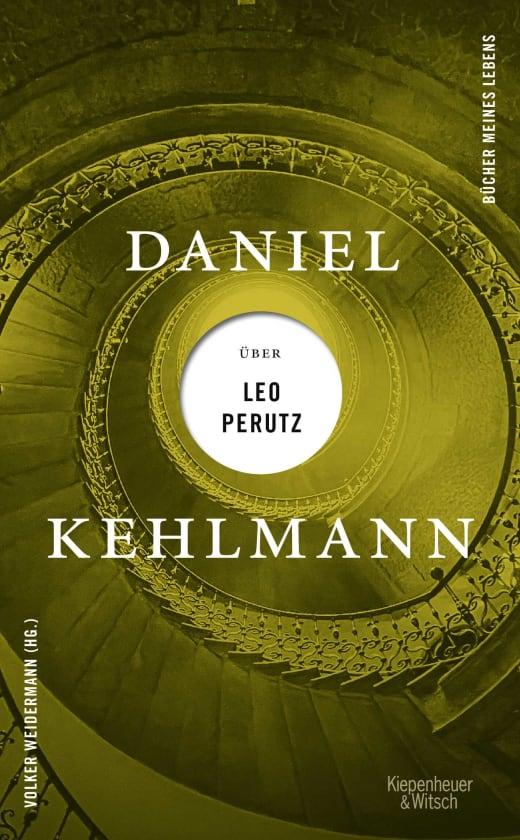Franz Kafka meets Agatha Christie

 Kiepenheuer & Witsch
Kiepenheuer & WitschDaniel Kehlmann | Daniel Kehlmann über Leo Perutz | Kiepenheuer & Witsch | 112 pages | 20 EUR
Going by his contemporaries' quotes, the writer Leo Perutz, who was born in Prague, Austria-Hungary, in 1882 and died in Bad Ischl, Austria, in 1957, should still be well known and widely read to this day, in the same vein as Robert Musil, Stefan Zweig, Rainer Maria Rilke or Kurt Tucholsky. Friedrich Torberg even compares Perutz with Franz Kafka, who by coincidence worked in the same insurance company as Leo Perutz. More precisely, Torberg calls Perutz a "slip-up between Franz Kafka and Agatha Christie". In other words, a "bastard" born of the most important German-language writer and the most successful British crime novelist. A melting-pot of literary expressionism and sophisticated, psychologically constructed suspense.
Agatha Christie continues to be read and her works are constantly being adapted for cinema and television. Franz Kafka even inspires Generation Z to post absurd, sad memes on Tiktok. Leo Perutz, on the other hand, is considered a former successful writer from a bygone century, a hidden gem at best.
Daniel Kehlmann has written this homage to change that. The author, who also comes from Austria, has a personal interest. For Kehlmann, Perutz is not only a great writer whose novels he devoured as a teenager, but also a role model who inspired him to write.
Kehlmann only briefly touches on two reasons why Leo Perutz has been forgotten: after the Nazis seized power, his publisher, Paul Zsolnay, separated himself from all Jewish authors. Fearing for his life, Leo Perutz emigrated to Palestine. After the capitulation of the Third Reich, this same publisher did not want to expose his readers to Jewish themes - reminding people of the perpetrators and accomplices of their crimes would hardly have boosted book sales.
The third reason why Perutz fell into oblivion, Kehlmann attributes to the writer's public shyness and discretion. Unlike many of his colleagues - then as now - Perutz revealed nothing of his private life. He preferred to let his writing speak for itself.
Daniel Kehlmann, born in Munich in 1975, has received numerous awards for his work. His novel "Measuring the World" is one of the most successful German books of the post-war period. "Tyll" was on the bestseller lists for months, as well as being shortlisted for the International Booker Prize. His most recently published novel "Lichtspiel" was also a great success. Daniel Kehlmann lives in Berlin and New York.
Accordingly, Kehlmann does not provide extensive biographical details, or draw parallels between Leo Perutz's life and work. He focuses in depth on the novels, especially "Nachts unter der steinernen Brücke"(At night under the stone bridge), which was published in 1953. The method Kehlmann uses is quite unusual: due to the complex, dramaturgical structure - fourteen apparently independent stories complement each other to form a multi-layered "Amor fou" from 16th century Prague - Kehlmann retells the entire novel.
At first, you wonder whether it wouldn't be better to read the original. But after a few sentences, it becomes clear that Kehlmann is elegantly unravelling and analysing those questions that had preoccupied Perutz: Is life predetermined? Or is a person free to shape their own destiny? Is there only one reality, or are there several realities, or truths, that coexist? Does it depend on which perspective you take, how much you know or what level of awareness you have reached?
Many novels dealing with such themes tend to become thesis novels. The author proposes a hypothesis and tries to breathe life into it through his characters. Perutz was not interested in such "didactic" manoeuvres. He wanted to entertain but at the same time portray reality in all its complexity. If necessary, even several realities.
"Nachts unter der steinernen Brücke" is about the fatal love between the Habsburg Emperor, Rudolf II, and a Jewish woman, Esther, and Rabbi Löw, who tries to protect his people whilst fulfilling the emperor's demands through sorcery.
Daniel Kehlmann impressively demonstrates how Perutz abandoned obvious, dramaturgical narrative methods in favour of ambiguous narrative strategies that hint at the fantasy genre.
Multi-perspective narration and the existence of multiple realities no longer come across as outdated 20th century fiction. Both are key ingredients of the success of modern serial dramas, which have been inspiring and captivating an audience of millions for only the last 20 years or so.
This homage to Leo Perutz is an enlightening read and a good introduction to his work, not just for readers interested in metaphysical questions and serial storytelling. Throughout, Daniel Kehlmann provides insights into his own working methods as a writer. They are more convincing and inspiring than many of the "writing guides" currently flooding the book market.



